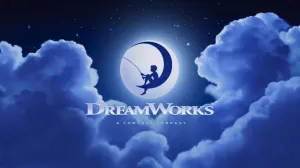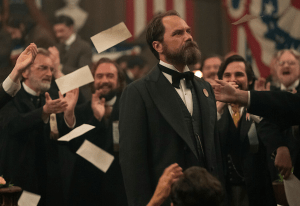
Warning: The following interview contains spoilers for Batman #47, on sale today.
Videos by ComicBook.com
If you haven’t yet read Batman #47, you should head to your local comic shop, or buy a copy digitally and read along with us.
Today saw the release of Batman #47 from DC Comics, writer Scott Snyder and artist Greg Capullo.
Pushing forward two separate narratives — a story for Batman (James Gordon) and a story for Bruce Wayne (amnesiac billionaire) — the issue brought everything together in a final-page reveal that made fans jump a bit: Bruce, back on the park bench where the “Superheavy” storyline began for him, finds himself face to face with a man he doesn’t recognize…but the readers do.
With green eyes, pale skin and a wide smile, this man seems fairly harmless…but what’s in store for next month?
We spoke with Snyder and Capullo earlier this week and, at the end of the conversation, asked Snyder about the issue’s big reveal.
So you’d said previously that you didn’t have any more stories that you planned on telling with this character during your Batman run. Can we assume, then, that this upcoming issue is a much different take on him than we’ve seen previously from you guys?
I hope so. I do have — every time I step way from that character I realize that I have more to say with him and through him and I do have more stories, but I’m not interested in doing those now, and my feeling is that this is the cap. this is not the kind of story that we’ve normally done, but it would be completely remiss of us not to circle back and show him where he is.
This was part of the pitch to Greg about this story, and this moment coming will really matter. I hope it’s very surprising to people and what happens between them in that he has a really different role to play than he normally does. This is a moment when all the characters in the arc are questioning the things that particular character throws in their faces, which is that everything is meaningless. Everything is laughable; you build these things and they fall apart, so celebrate that.
And here, everything has fallen apart, so he’s sort of the perfect character to have show up at this moment and have that actual argument on a bench.
It’s interesting that you talk about it that way; I always felt like in the Death of Superman story, it was important that Lex had to be there to have the scene of how he responded. On that note, do you think that when you have a shift in the Batman books, it’s important to show what it means for this character?
I do! I mean, this character to me, it’s not about using him becuase he’s important to the mythos in any kind of iconic way; it’s more what he means personally to us on this run. He really represents an antithetical force to Batman that’s always there. Obviously when you’re writing and drawing Batman, he represents what you hope to overcome.
Gotham is us, pushing our fears at this hero, who then overcomes them for us to make us feel like we can. And for me, writing this character, that figure who shows up at the end is always the sort of dark undertow — the force pulling the other way in my life, for me. When I’m anxious or depressed, these are the things that make me feel blackest, is that feeling of “What’s the point of all of this? Who cares? What does it all end in?” And for me at least, as long as I write Batman, he has to be there in some form as a counterpart, regardless of whether he’s the star or he’s just hovering at the edges.
Check back later for our full interview.








